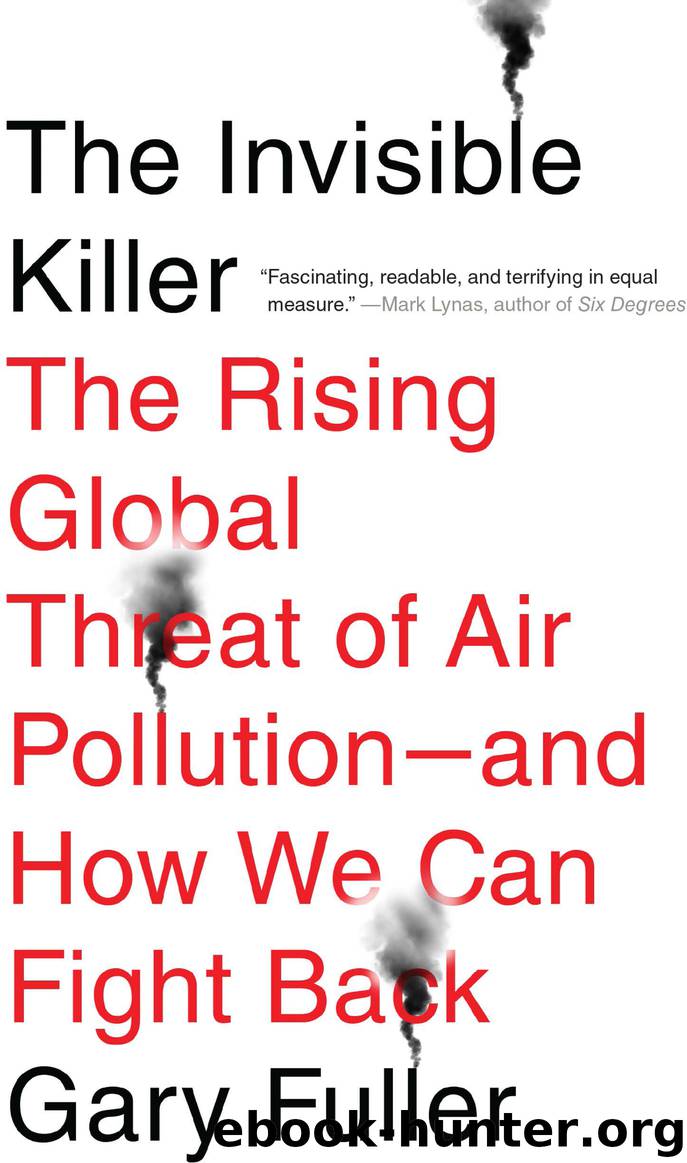The Invisible Killer by Gary Fuller

Author:Gary Fuller
Language: eng
Format: epub
Publisher: Melville House
Published: 2019-03-18T16:00:00+00:00
Chapter 11
Wood-burning—the most natural way to heat my home?
Beneath the radar, an old problem returned to Europe in the twenty-first century. Gone are home fireplaces fueled by coal. Instead, browse through the home-style magazines at your newsstand or watch interior design programs on television and you will see beautifully decorated living rooms complete with a roaring wood fire. This must-have design feature comes at an environmental cost.
The rediscovery of wood-burning in the cities of northwest Europe can be traced to Paris. In 2005, Olivier Favez was a young student researching for his PhD when he struck upon something unusual and worrying.1 He was measuring air pollution on the edge of Paris’s Parc de Choisy.*1 Typical of the small parks and green spaces that add to Paris’s character, the Parc de Choisy has formal paths and lines of trees, fountains and a playground. On one side is a large brick building that houses the city’s public health laboratories, from whose roof Favez was taking measurements. Unsurprisingly his instruments told him that the air contained lots of soot from diesel traffic. But Favez noticed another pattern, one that had been seen before but that he did not expect to find in the center of the French capital. The instrument had been used previously in Alpine valleys, where wood-burning has a serious impact on air pollution, so Favez recognized the signal right away. But if it was correct then somehow wood-burning was a serious problem in Paris too. Favez continued his measurements for five weeks and each night, especially on weekends, he saw air pollution from wood-burning. It looked as if wood smoke was adding an extra 10 to 20 percent to the city’s particle pollution. Not only this, but the wood-burning pollution was coming from within the city itself, not drifting in from the countryside.
Gradually traces of wood-burning were found in the air in other major cities in Western Europe, often when scientists were looking for something else. In 2010, I was working in Paris as part of an international advisory panel on the city’s air pollution. The panel was led by Martin Lutz, who had formerly worked in the European Commission and was now heading the air pollution section of the Berlin city government. We were looking carefully at Favez’s data and new measurements that were also showing a widespread wood-burning problem. We all began to think of our home cities and how widespread the issue could be. In one memorable meeting, Lutz declared confidently that wood-burning was not a problem in his city. He underestimated the new popularity of home fires.
Unknown to all of us, back in Berlin, PhD student Sandra Wagener was investigating how the city’s trees and plants affect its air pollution.2 She collected particle samples from the air in three different parts of the city and took them back to her laboratory for analysis. One of the chemicals that she looked for was a sugar called levoglucosan. In much the same way that caramelizing onions makes them taste sweet, levoglucosan is released when wood is burnt.
Download
This site does not store any files on its server. We only index and link to content provided by other sites. Please contact the content providers to delete copyright contents if any and email us, we'll remove relevant links or contents immediately.
The Secret History by Donna Tartt(18951)
The Social Justice Warrior Handbook by Lisa De Pasquale(12170)
Thirteen Reasons Why by Jay Asher(8848)
This Is How You Lose Her by Junot Diaz(6837)
Weapons of Math Destruction by Cathy O'Neil(6220)
Zero to One by Peter Thiel(5736)
Beartown by Fredrik Backman(5682)
The Myth of the Strong Leader by Archie Brown(5461)
The Fire Next Time by James Baldwin(5386)
How Democracies Die by Steven Levitsky & Daniel Ziblatt(5175)
Promise Me, Dad by Joe Biden(5117)
Stone's Rules by Roger Stone(5053)
A Higher Loyalty: Truth, Lies, and Leadership by James Comey(4909)
100 Deadly Skills by Clint Emerson(4882)
Rise and Kill First by Ronen Bergman(4741)
Secrecy World by Jake Bernstein(4703)
The David Icke Guide to the Global Conspiracy (and how to end it) by David Icke(4658)
The Farm by Tom Rob Smith(4468)
The Doomsday Machine by Daniel Ellsberg(4452)
